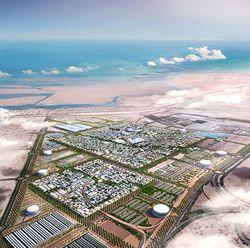I'm not much of a Guinness World Records fan and scrolling through the website my first thought with most records is: "You really don't have anything more meaningful to do with your life (then to create a loo that can speed up to 60 km/h)?" But last week I had some time to kill in a waiting room (yes, I had indeed nothing better to do then to read about a speeding loo) and was glancing through a hard copy of the Guinness World Records Book when I spotted some remarkable environmental records.
What do you think about this one:
The most plastic bottles recycled in one week is 39,627.42 kg was achieved by CIMA KIDS 2012 at Parque La Carolina, Quito, Ecuador on 27 October 2012.
Photo AgenciaAndes
CIMA KIDS is an event organised by three companies - SAMBITO, Maruri and Comefex - to promote environmental awareness amongst children in Ecuador. 109 schools took part in the collection of the bottles which totalled approximately 1,559,002. The bottles were then collected and taken to a central location for weighing by EMASEO, this took six days in total. The bottles have a value of $30,000 once recycled which was donated to Yasuni-ITT an initiative that aims to preserve a national park from oil exploitation. At the time of writing this was the first-ever Guinness World Records record adjudicated in Quito, Ecuador.
Or this cool one:

The largest vertical garden is 1,516 m² (16,318.02 ft²) and is situated in the new Seoul City Hall, Seoul, South Korea. The record-breaking garden was created by the Seoul Metropolitan Government and completed on 31 August 2012.
There are sad ones like:
The Devil's Hole pupfish (Cyprinodon diabolis) numbering between 200 and 500 is restricted entirely to an unusual system of water holes in Nevada. Its main threat comes from the pumping of groundwater for irrigation, desert development and the introduction of exotic fish species into their environment.
These tiny fish are interesting not only because their species is at least 10,000 years old but also because they can resist extreme temperature changes and can tolerate high mineral concentrations in the water. They eat aquatic plants and small creatures like mosquito larvae. Devil's Hole pupfish grow to about 22 mm (0.9 in) and reach full maturity within 2–3 months, although they have been known to survive for about a year.
And where do you think the most sustainable city is? A city:

(...) designed by the British architectural firm Foster and Partners, is the world's first city designed to be zero-carbon and zero-waste. All of its power is generated from renewable resources, and all waste material is recycled. Cars are banned in favour of electric, driverless, underground vehicles, meaning that the city's projected 50,000 citizens should leave no carbon footprint.
Answer: ıqɐɥp nqɐ 'ʎʇıɔ ɹɐpsɐɯ
For many more funny, interesting and completely useless records you can check the website:

